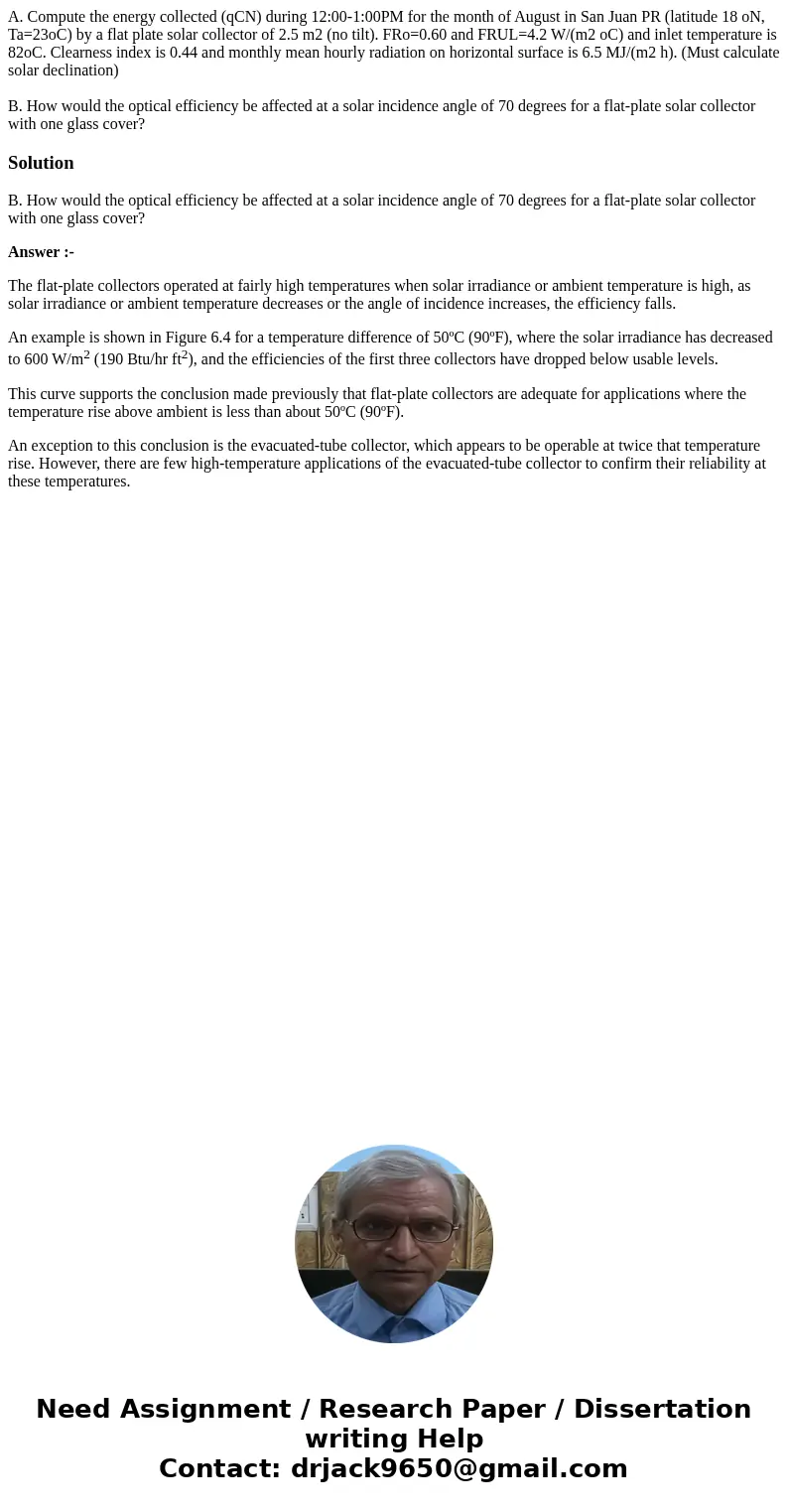A Compute the energy collected qCN during 1200100PM for the
A. Compute the energy collected (qCN) during 12:00-1:00PM for the month of August in San Juan PR (latitude 18 oN, Ta=23oC) by a flat plate solar collector of 2.5 m2 (no tilt). FRo=0.60 and FRUL=4.2 W/(m2 oC) and inlet temperature is 82oC. Clearness index is 0.44 and monthly mean hourly radiation on horizontal surface is 6.5 MJ/(m2 h). (Must calculate solar declination)
B. How would the optical efficiency be affected at a solar incidence angle of 70 degrees for a flat-plate solar collector with one glass cover?
Solution
B. How would the optical efficiency be affected at a solar incidence angle of 70 degrees for a flat-plate solar collector with one glass cover?
Answer :-
The flat-plate collectors operated at fairly high temperatures when solar irradiance or ambient temperature is high, as solar irradiance or ambient temperature decreases or the angle of incidence increases, the efficiency falls.
An example is shown in Figure 6.4 for a temperature difference of 50ºC (90ºF), where the solar irradiance has decreased to 600 W/m2 (190 Btu/hr ft2), and the efficiencies of the first three collectors have dropped below usable levels.
This curve supports the conclusion made previously that flat-plate collectors are adequate for applications where the temperature rise above ambient is less than about 50ºC (90ºF).
An exception to this conclusion is the evacuated-tube collector, which appears to be operable at twice that temperature rise. However, there are few high-temperature applications of the evacuated-tube collector to confirm their reliability at these temperatures.

 Homework Sourse
Homework Sourse